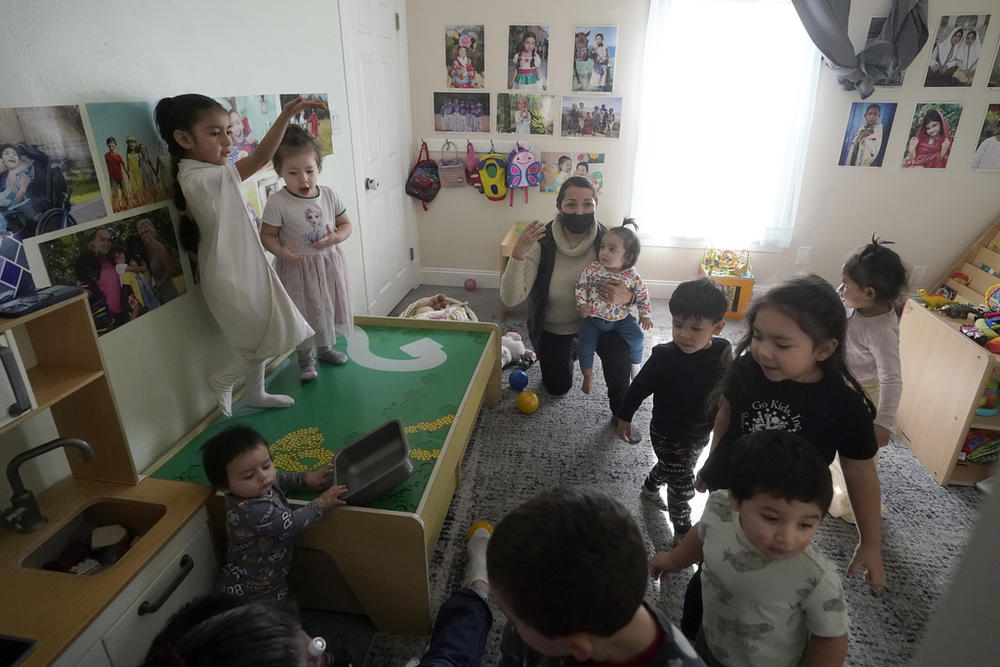
Caption
Patricia Moran (middle) watches as children play at her child care facility in San Jose, Ca. Nationwide and in Georgia, caregivers are paid worse than 98% of professions, leading to chronic workforce shortages and high turnover.
Credit: (AP Photo/Jeff Chiu)

